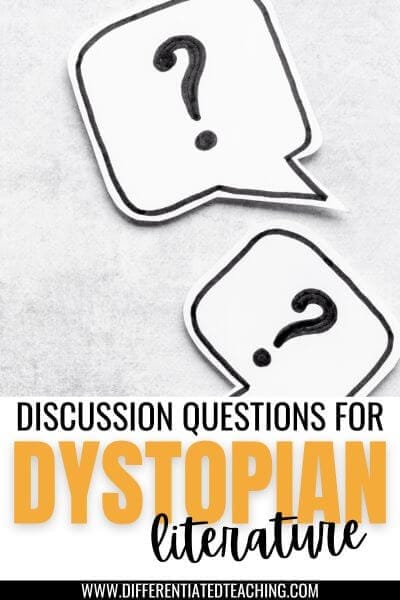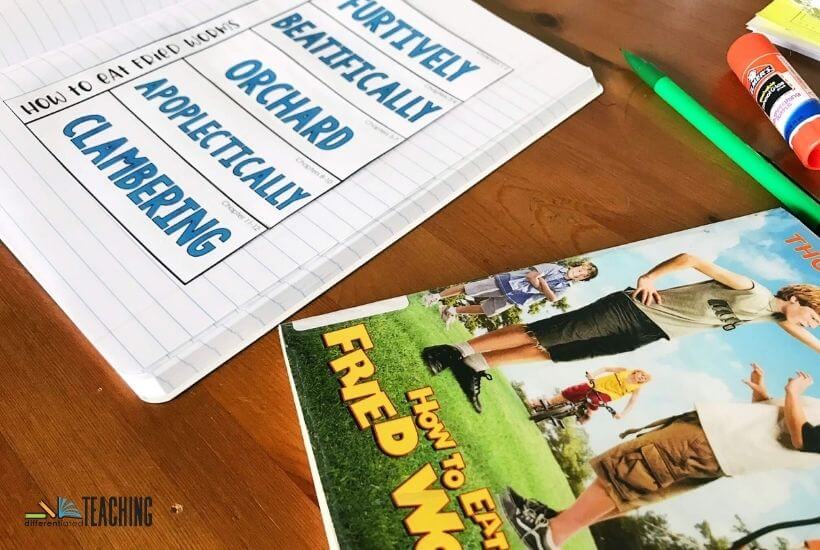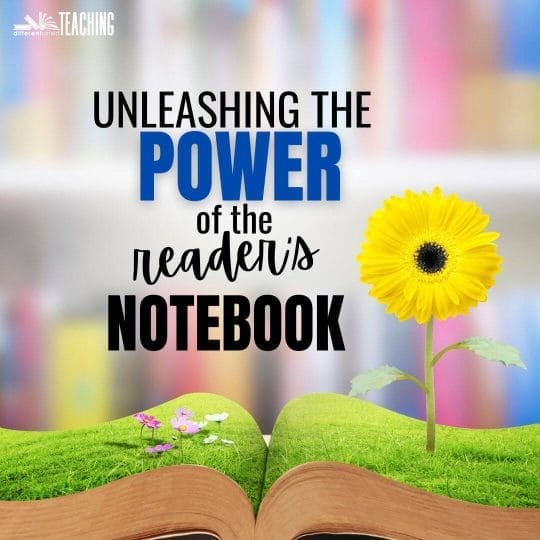What is Dystopian Literature? Key Features & Examples
Dystopian literature offers an engaging and thought-provoking way to get upper elementary and middle school students thinking critically about society. Through stories that explore themes of control, surveillance, and resistance, students can reflect on their own experiences and the world around them. Books like The Hunger Games and The Giver bring abstract concepts like power, freedom, and personal autonomy into sharp focus, making these themes accessible and relevant to students.
In this post, I’ll break down the characteristics of dystopian societies and how they are portrayed in popular novels. Plus, I’ll share ideas on introducing these important themes into your lessons, with book recommendations and discussion questions.
Utopia vs. Dystopia: Two Opposing Worlds
Before diving into dystopian literature, it’s essential to understand the contrast between a utopia and a dystopia.
- Utopia: A utopia represents an ideal society where everything functions perfectly—no poverty, conflict, or inequality. It’s a dream world where everyone’s needs are met.
- Dystopia: On the surface, a dystopia may seem like a utopia, but it hides deep flaws. The common characteristics of dystopian worlds are authoritarian control, suppression of freedoms, and extreme inequality. While society may promise safety and order, it justifies oppressive practices that leave individuals powerless.
In literature, dystopian stories often start with what seems like a utopia, only to reveal darker truths. This contrast helps students explore important questions about power, control, and the consequences of striving for societal perfection.
5 Key Characteristics of a Dystopian Society
Dystopian societies in literature share common characteristics that define their oppressive nature. These elements create tension and conflict, making dystopian fiction both captivating and thought-provoking.
- Propaganda and Control of Information
Ruling powers often use propaganda to manipulate citizens. For example, in 1984, the government alters historical records to control citizens’ understanding of the past, keeping them compliant and confused. - Surveillance and Lack of Privacy
Dystopian societies often enforce strict surveillance. In The Hunger Games, the Capitol monitors tributes with cameras, emphasizing its control over both participants and viewers. - Restriction of Freedom and Independent Thought
Personal freedoms and independent thought are heavily restricted. In The Giver, the society suppresses emotions and choice to maintain control, denying citizens the ability to think or feel for themselves. - Dehumanization and Oppression
Dystopian societies often strip people of their humanity. In The Maze Runner, characters are treated like lab rats, subjected to life-threatening experiments in the name of control. - Illusion of a Perfect Society
Many dystopian societies create the illusion of perfection. In Brave New World, citizens are distracted by pleasure and materialism, unaware of the control that limits their freedom.
Common Elements of Dystopian Fiction
Dystopian fiction is a subgenre of science fiction that warns us about the dangers of unchecked power, technological overreach, and societal decay. These stories often act as cautionary tales, encouraging readers to think critically about the future and the role of government and authority.
Here are some of the key elements found in dystopian fiction:
- Oppressive Government or Authority: Whether through propaganda or strict surveillance, an oppressive regime controls the citizens, as seen in 1984 and The Hunger Games.
- Constant Surveillance: Citizens live under constant watch, limiting personal freedom and forcing conformity. This theme is prominent in 1984, where “Big Brother” is always watching.
- A False Utopia: Dystopian stories often begin with the appearance of a perfect society, only to reveal deep flaws beneath the surface, as shown in Brave New World.
- Struggle Against the System: A central protagonist challenges the oppressive system, risking everything for freedom and truth. The Hunger Games and The Maze Runner are great examples of this theme.
Key Features of Dystopian Protagonists
Protagonists in dystopian literature often share common traits that make them stand out as symbols of resistance. These characters are typically relatable yet brave, facing insurmountable odds to fight for freedom and personal autonomy. Here are some defining features:
- Awareness of Society’s Flaws – Dystopian protagonists are often among the first to see the corruption and control that others don’t recognize. Katniss Everdeen in The Hunger Games quickly understands the Capitol’s brutality and seeks to resist.
- Resistance to Conformity – These characters resist the societal norms imposed on them. In 1984, Winston Smith challenges the Party’s attempts to control his thoughts, even at the risk of his life.
- Courage and Perseverance – Dystopian protagonists face significant danger but persist in their pursuit of freedom. Tris in Divergent continually rebels against the faction system, even as she faces personal risk.
- Moral Integrity and Compassion – These characters often act out of empathy and a strong sense of justice. In The Giver, Jonas risks everything to save a child and uncover the truth.
- Internal Conflict – Protagonists often struggle with internal dilemmas as they grapple with their society and role within it. In The Maze Runner, Thomas must confront his past and the role he plays in the dystopian experiment.
Great Dystopian Fiction Recommendations by Age Group
Upper Elementary (Ages 9-11)
Dystopian literature for younger readers should focus on adventure and teamwork, introducing dystopian elements without overwhelming them with dark themes.
- The City of Ember by Jeanne DuPrau: A crumbling underground city and a mysterious journey to the surface. Suitable for ages 9-11.
- Gregor the Overlander by Suzanne Collins: A fantasy-adventure novel with light dystopian themes, perfect for introducing the genre to younger readers.
Middle School (Ages 11-14)
Middle schoolers are ready for more mature dystopian literature, often featuring characters who rebel against oppressive societies.
- The Giver by Lois Lowry: A classic dystopian novel exploring conformity and individuality, perfect for middle school readers.
- The Hunger Games by Suzanne Collins: Themes of survival, government control, and rebellion make this novel a hit with middle school students.
- The Maze Runner by James Dashner: A gripping story about survival and escape in a controlled environment.
High School (Ages 14 and Up)
High school students can handle the more intense themes found in advanced dystopian literature, including political corruption and personal freedom.
- 1984 by George Orwell: A must-read that explores the dangers of surveillance and authoritarian control.
- Fahrenheit 451 by Ray Bradbury: A novel about censorship and the loss of individual thought.
- The Handmaid’s Tale by Margaret Atwood: An exploration of gender oppression, control, and resistance, suitable for older teens.
- Divergent by Veronica Roth: A popular choice for exploring themes of identity, rebellion, and societal division.
Thought-Provoking Discussion Questions for Dystopian Literature
To deepen students’ understanding of dystopian literature, it’s helpful to guide them with questions that encourage critical thinking and reflection. These questions will help students analyze key themes, characters, and the societal structures in dystopian novels.

General Questions for Any Dystopian Novel:
- What is the biggest problem in this dystopian world? How does this problem affect the people living there? What would you do if you were in the protagonist’s position?
- How does the government or leader keep control over the people?Do they use fear, rules, or technology? What impact does this control have on the main character and others in the story?
- Does the world seem perfect at first? If yes, how do we realize that it’s not really a good place to live? What changes your mind as a reader?
- What makes the main character different from the others? Why does the protagonist want to change things? Do their actions make the world better or worse?
- How do the people in the story lose their freedom? Are they aware of their loss of freedom, or do they think everything is fine? How would you feel in a world like this?
Why Dystopian Literature is Perfect for Engaging Young Readers
Dystopian literature provides students with a powerful lens to examine complex societal issues while keeping them deeply engaged. Whether it’s the exploration of control, personal freedom, or the fight for autonomy, these stories resonate with students of all ages.
By introducing dystopian literature at the right age, you encourage critical thinking and reflection, helping students draw meaningful connections between the fictional worlds they read about and their own realities. As you bring dystopian literature into your classroom, create discussions that link these imagined worlds with real-world issues, sparking meaningful and impactful conversations.










